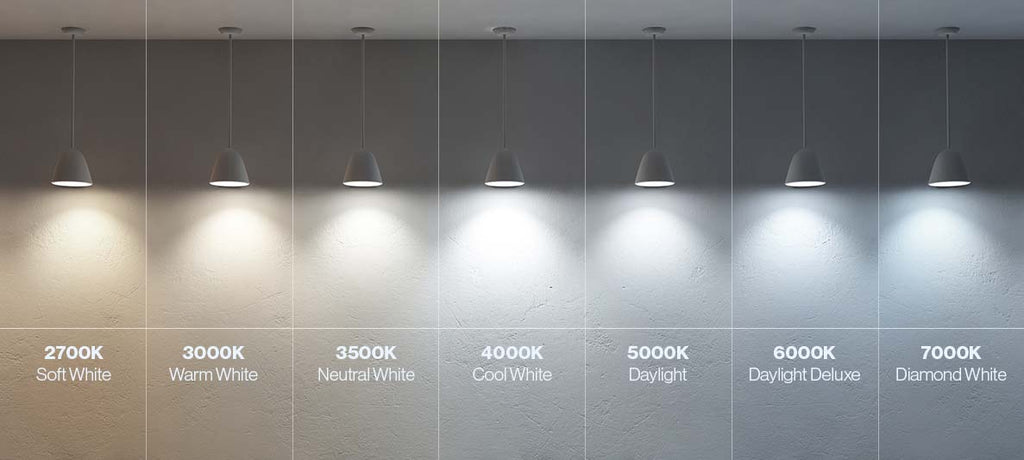All About 0-10V Dimming
Scale the output of your commercial LED light fixture to create low dimming levels with 0-10V dimming. This type of dimming is not the same as phase control used for incandescent or halogen light bulbs where a decrease or increase in power changes intensity.
What is 0-10V and 1-10V dimming?
LEDs require constant DC power since an LED is always on. Dimming LED light is focused on electricity flow. 0-10V dimming controls LED output intensity to change how much light is emitted.
The wiring is different when working with 0-10V and 1-10V dimming. Coordinate your lighting plan to accommodate either a sinking or sourcing current. If you are not familiar with this and do not feel comfortable with running wiring multiple, dimmable fixtures, please be sure to consult with a professional electrician.
0-10V Dimming
0-10V dimming allows you to scale the output of your LED to create the lowest dimming levels with a smooth dimming curve. This is a simple electronic control system. It involves communication with the dimming driver, which is often referred to as a control signaling system. It includes Class 1 wiring in a line voltage switch.
The DC voltage varies between 0 up to 10V with this dimming method. How much current flows through the LED will determine its light output. The signal to the LED driver is switched, which turns the driver on and off. You’ll want to maintain polarity and follow line voltage zoning with a 0-10V system.
When your light is set to 10V, that is the highest light intensity. The setting of 0 is the least light output. This form permits the full range of light intensity so you can make subtle changes to the light quality in a room.
1-10V Dimming
1-10V dimming offers a scaled intensity of lamp output. A setting of 1 is approximately 10% and 10 is 100%. This is a current sink system and it does not go down to a 0V setting where either an additional relay cannot be added, or it might be unstable. This is not as common as 0-10V dimming.
What is Pulse Width Modulation (PWM)?
Pulse Width Modulation is a series of varied electrical pulses to reduce the average power an electrical signal will deliver. PWM outputs a modulating signal to drive an analog device.
Pulse Width Modulation or PWM is used primarily for dimmable lights, variable-speed motors, speakers, and actuators. PWM allows you to control an analog device yet does not create a true analog output.
What About Class 1 and Class 2 Circuits?
Class 1 Circuit
A signaling system used to illuminate a light or signal equipment to turn on an audio signal, such as a bell or horn. Several Sunco lights use this to employ a Class 1 signaling circuit that illuminates the LED.
The National Electric Code (NEC) Article 725 designates Class 1, 2, 3 wiring details. A Class 1 circuit (signaling) can operate up to 600V. It is located in the wiring between the load side of a circuit breaker or fuse (an overcurrent device) and the connected equipment. It is installed in a conduit or protective cable assembly, such as a racetrack, for safety.
Class 1 circuits are a line voltage switch and allow for more power than Class 2, which runs on low voltage. That means Class 1 circuits can accommodate more LEDs and are more effective than Class 1 drivers.
Class 2 Circuit
A low voltage circuit located between the load side of a Class 2 power source and the connected equipment. The power supply in this case would convert 120V power into low voltage.
The National Electric Code (NEC) Article 725 designates Class 1, 2, 3 wiring details. Class 2 wiring uses conductor sizes 18 AWG or 16 AWG. Class 2 provides acceptable protection from an electric shock and is considered to be safe from fire risk.
Why is Dimming Important?
Dimming allows you to adjust the mood of a room by changing from bright light to a lower, darker level of light. Dimmable light fixtures are ideal for multi-purpose locations where a room is used differently throughout the day.
Multipurpose rooms include offices or classrooms where you might need to adjust from bright, task lighting for lectures or meetings to a darker space for multimedia presentations might need dimmable ceiling panel light, such as the Sunco 50W LED Ceiling Panel (2x4). They also include common areas or shared space in an apartment or condominium where group activities might occur in an event space that require a different look and feel.
When you are lighting interior spaces such as warehouses, gymnasiums, supermarkets or grocery stores, you might use a dimmable LED light fixture to modify the lighting in certain sections of the room where bright task lighting might not benefit the use of the space.
Which Sunco Products Include 0-10V or 1-10V Dimming?
This type of dimming is currently available in several commercial lighting fixtures from Sunco Lighting, including:
• 50W LED Ceiling Panel 2x4
• Shoebox LED 150W Parking Lot Light with Dusk to Dawn
• Shoebox LED 200W Parking Lot Light with Dusk to Dawn
• UFO High Bay 150W LED Fixture
• UFO High Bay 200W LED Fixture
• UFO High Bay 240W LED Fixture
• and others
Sunco now offers a 2x2 LED Ceiling Panel.
Be sure to pair any of our dimmable lighting products with a compatible dimmer. Dimmer switches are tested for compatibility to grade lamp performance under various loads. Standard dimmers (not meant for LEDs) cannot provide the full brightness range and may also result in flickering or strobing effects. Avoid a mismatch by connecting a compatible dimmer. You’ll find Dimmer Lists in the Support tab or on our Manuals & Documentation page.
NOTE: Page edited to add link to 2x2 LED Ceiling Panel.
1 comment
-
Posted on by SamuelDo you produce 240v bulbs and lighting systems


